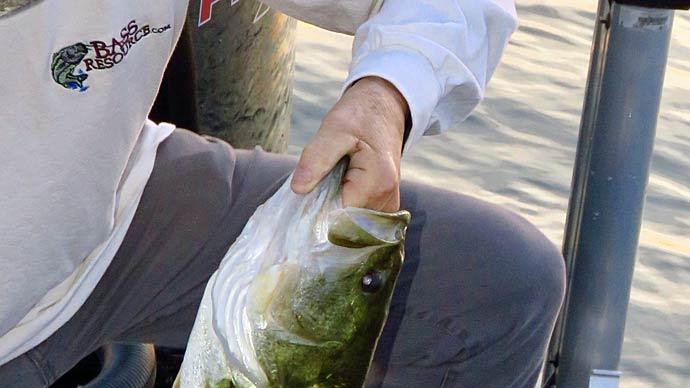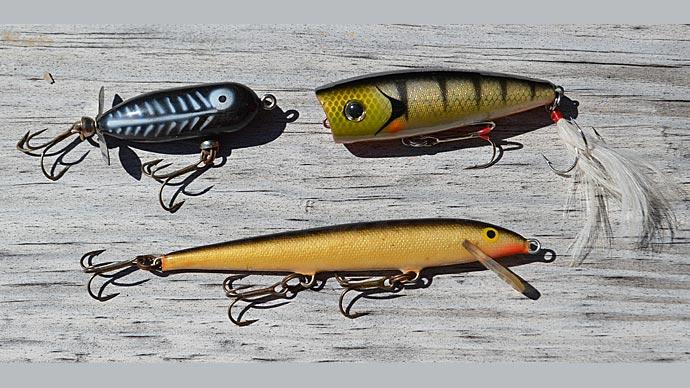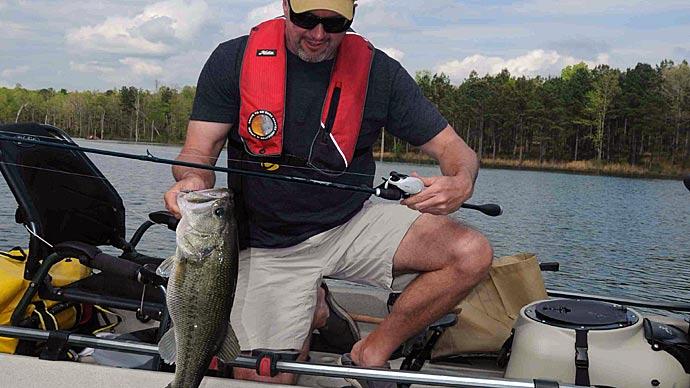
I don’t think I’ve ever met a fisherman who didn’t get excited when he talked about topwater fishing. There’s no greater angling thrill than having a bass explode on your surface lure.
Even so, today’s bass fishermen don’t put these electrifying lures to use as often as they should. Years ago, when we didn’t have as many lures to choose from, the topwater was the angler’s most productive tool. Now, with dozens of soft-plastic lures, crankbait designs and spinnerbait blade combinations to choose from, topwater lures often are overlooked.
Those who limit topwater fishing to early morning, late evening or overcast days are missing out on big bass potential. Some of the biggest bass I’ve caught on surface lures have come during the hottest part of the day. When fishing is slow, yet you know you’re in an area where big bass live, try fishing a big topwater around heavy cover.
A good example of this would be around floating docks over deep water. During bright, sunny summer days, bass will suspend under floating docks, even though the docks hover over 20 feet of water. Worms and jigs fall way below the fish, but a topwater worked along the edge of the dock can coax one out and make it strike.
Another misconception is that topwaters aren’t effective until the water temperature exceeds 60 degrees. Not only have I caught some tremendous bass from clear mountain lakes in mid-50-degree water, but I think the best action with a buzzbait or a Zara Spook can occur when the water is slightly below 60 degrees.
The cigar-shaped Zara Spook may be at its best in cool, deep lakes. With its side-slashing action, a Spook has a knack for calling big bass up from 10 feet or more in clear water. Not all topwaters are the same nor do they work under all conditions. A noisy lure like a buzzbait or a prop-style bait is best suited to choppy or stained water where its noise and erratic action get the bass’s attention. Those lures are also good choices when fishing over thick grass where bass can’t see the bait.
However, noisy lures worked across a glassy, calm surface under bright skies and in clear, shallow water can spook fish. Conditions should dictate how you fish the topwater lure. If the surface is calm and there isn’t a lot of activity, choose a more subtle presentation, such as working the bait slower and with less movement.
If it’s windy and there’s a lot of activity from bait fish, work the lure more frantically and cause more ruckus on the water. I generally prefer to work the bait faster and erratically until I’m convinced the presentation isn’t working. The faster movement lets me search more water, and the erratic movement triggers more impulse strikes.
Line size can make a big difference, too. I’ve learned that chugger lures work better on 20-pound line than on smaller line because the thicker monofilament adds buoyancy. Therefore, these lures skate over the surface better.
Naturally, there are days when bass prefer lures fished beneath the water or closer to the bottom. But when they seem to be ignoring everything, tie on a topwater and fish it around cover. You may not get a lot of strikes, but the ones you get make the wait worthwhile.
You can find more articles, quick tips and much more at HankParker.com.




